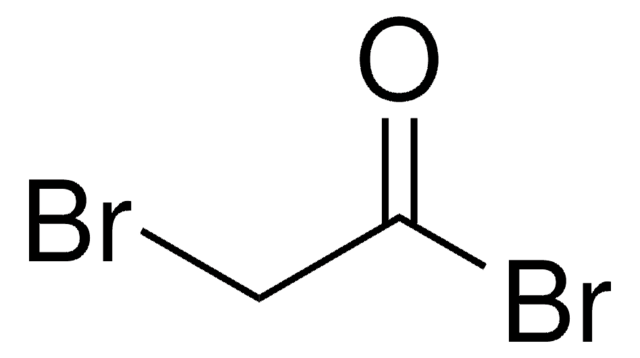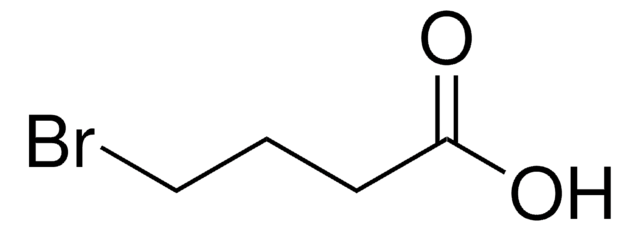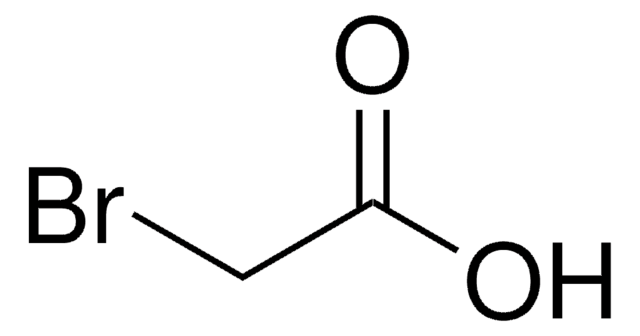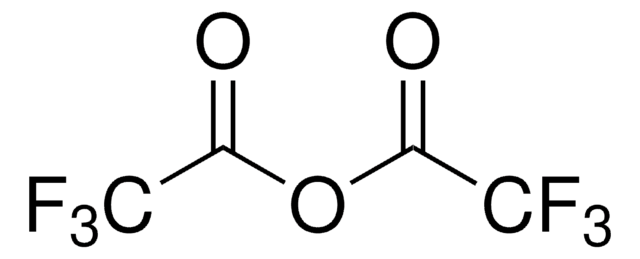284262
Iodoacetic anhydride
Synonym(s):
2-Iodoacetic anhydride, 2-Iodoacetyl 2-iodoacetate, Iodoacetic acid anhydride, Iodoacetyl anhydride
About This Item
Recommended Products
form
solid
Quality Level
mp
47-49 °C (lit.)
solubility
chloroform: soluble 10%, clear to slightly hazy, yellow (pink or tan)
functional group
anhydride
ester
iodo
storage temp.
2-8°C
SMILES string
ICC(=O)OC(=O)CI
InChI
1S/C4H4I2O3/c5-1-3(7)9-4(8)2-6/h1-2H2
InChI key
RBNSZWOCWHGHMR-UHFFFAOYSA-N
Looking for similar products? Visit Product Comparison Guide
Related Categories
Application
Reactant used for:
- Sythesis of N-iodoacetyl glycosylamine derivatives and converting amino precursors to IA derivatives
- Linking lysine residues to N-terminal α-amino groups of peptides
- Capping amines and yielding a thiol reactive iodo-derivative
- Iodoacetylation
Signal Word
Danger
Hazard Statements
Precautionary Statements
Hazard Classifications
Acute Tox. 3 Oral - Eye Dam. 1 - Skin Corr. 1A
Storage Class Code
6.1C - Combustible acute toxic Cat.3 / toxic compounds or compounds which causing chronic effects
WGK
WGK 3
Flash Point(F)
230.0 °F - closed cup
Flash Point(C)
110 °C - closed cup
Personal Protective Equipment
Regulatory Listings
Regulatory Listings are mainly provided for chemical products. Only limited information can be provided here for non-chemical products. No entry means none of the components are listed. It is the user’s obligation to ensure the safe and legal use of the product.
ISHL Indicated Name
Substances Subject to be Indicated Names
ISHL Notified Names
Substances Subject to be Notified Names
JAN Code
284262-1G:4548173993416
284262-VAR:
284262-250MG:4548173993423
284262-BULK:
Choose from one of the most recent versions:
Already Own This Product?
Find documentation for the products that you have recently purchased in the Document Library.
Customers Also Viewed
Our team of scientists has experience in all areas of research including Life Science, Material Science, Chemical Synthesis, Chromatography, Analytical and many others.
Contact Technical Service













